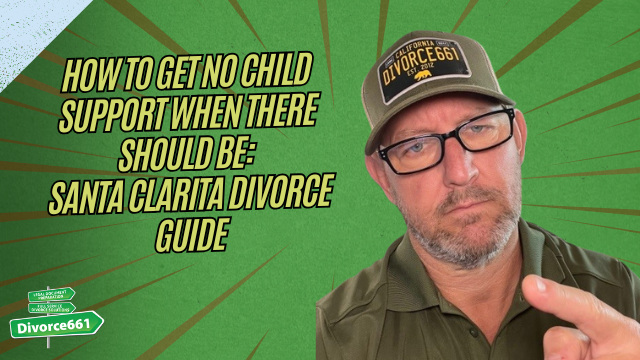How to Get NO CHILD SUPPORT When There Should Be: Santa Clarita Divorce Guide
Navigating child support orders during a divorce can be complex and emotionally charged. If you’re going through a divorce in Santa Clarita and wondering how to legally avoid child support payments when the child support calculation indicates there should be an obligation, this guide is for you. Drawing on insights from Tim Blankenship of Divorce661, this article will help you understand an important legal tool that can be used in such situations — the FL 342-A Non-Guideline Order.
Understanding Child Support Calculations
Child support calculations are typically based on standardized guidelines intended to ensure fairness and consistency. These calculations consider factors like each parent’s income, the amount of time each parent spends with the child, and other relevant expenses. Usually, if the calculation shows that one parent owes child support, the court will include this obligation in the official divorce order.
However, there are instances where one or both parties may want to deviate from the guideline amount or avoid child support entirely, even though the calculation suggests otherwise. This is where understanding the right legal forms and procedures becomes crucial.
The FL 342-A Non-Guideline Order: What Is It?
The FL 342-A Non-Guideline Order is a special form used in California family law cases. It allows the court to issue a child support order that deviates from the standard child support guidelines. Essentially, this form is used to document and authorize exceptions to the usual child support calculations.
When attached to your divorce paperwork, the FL 342-A can be used to request that no child support be ordered, even if the child support calculator indicates that support should be paid. This is not a guaranteed outcome but rather a formal way to present your case for why child support should not be included in the divorce decree.
How to Use the FL 342-A to Avoid Child Support
If you want to avoid having child support included in your official divorce order despite the calculations, the key step is to attach the FL 342-A Non-Guideline Order form to your divorce petition or response. This signals to the court your intent to seek a non-standard child support arrangement.
Reasons why a court might consider a non-guideline order include:
- Both parents share custody equally, and child support may not be necessary.
- One parent has extraordinary expenses or income disparities that warrant deviation.
- Other unique circumstances or agreements between parents that justify no child support.
It’s important to provide clear justification and evidence supporting your request for a non-guideline order. The court will review the facts and make a decision based on the best interests of the child and fairness to both parties.
Why This Matters in Santa Clarita Divorces
Divorce cases in Santa Clarita, like in other parts of California, follow the state’s child support guidelines closely. However, families have unique situations that sometimes call for flexibility. Using the FL 342-A form is a practical way to communicate those needs to the court.
Tim Blankenship from Divorce661 emphasizes that if you don’t want child support included but the calculations say otherwise, attaching the FL 342-A is the procedural step you need to take. Without this form, the court is likely to default to the guideline amount, making the child support order official in your divorce decree.
Conclusion: Taking Control of Your Child Support Order
Child support can be a sensitive and complicated aspect of divorce. Understanding your options and the correct legal procedures can empower you to advocate for arrangements that truly fit your family’s circumstances.
If you find yourself facing a child support calculation that you believe should not apply, remember the power of the FL 342-A Non-Guideline Order. By attaching this form to your divorce paperwork, you open the door to possible exceptions that can lead to no child support being ordered.
Always consider consulting with a qualified family law attorney to navigate this process smoothly and ensure your rights and your child’s best interests are protected throughout your divorce journey.

